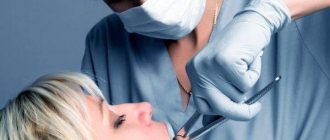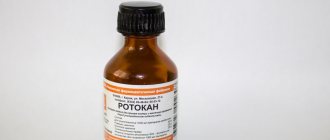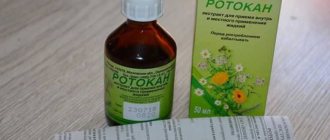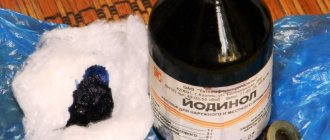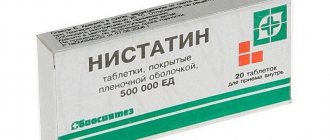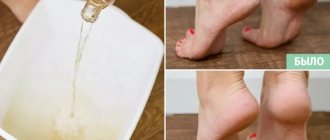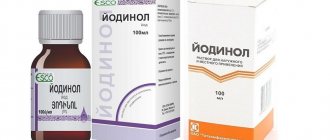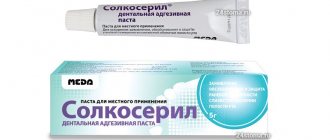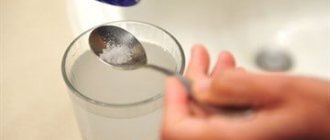Chlorhexidine (“Chlorhexidine bigluconate”) is one of the most popular gargles for a wide range of infectious and viral diseases. Its fame is due to its availability and decades-proven effectiveness. However, it is not clear to everyone how to dilute Chlorhexidine for rinsing. In the article we will present in detail the instructions for preparing the solution for adults and children, indications for use, analogues of the product, recommendations for more effective use.
Characteristics of the product
"Chlorhexidine" by its nature is a universal antiseptic. It was first synthesized at the beginning of the last century in Great Britain. From then to the present, it has been the leading disinfectant for the external treatment of skin, as well as medical instruments. Widely used in surgical practice. In addition to being an independent drug, it is part of many medications - antiseptic, promoting skin regeneration, etc.
"Chlorhexidine bigluconate" is produced by dozens of Russian enterprises alone. In fact, there is no difference in their products. The product differs only in its concentration. In this format it can be presented in five variations:
- 0,05 %.
- 0,2 %.
- 0,5 %.
- 1 %.
- 5 %.
What do these numbers mean? For example, 100 ml of a “Chlorhexidine” solution of five percent concentration (5%) contains 5 ml of the active substance.
The composition of Chlorhexidine preparations is identical. These are just two elements:
- Purified drinking water.
- Ingredient: chlorhexidine bigluconate.
Release form: solution in vials (plastic, glass) of various volumes. The most common containers in pharmacies are 100-500 ml containers. Bottles with a volume of 2 liters or more are produced especially for medical institutions.
How is Chlorgesidine used? What is it used for? The scope of its application is wide. If you purchase the drug specifically for rinsing, then it is better to stop at a solution of 0.05% concentration.
Composition of Chlorhexidine
The composition of the drug is 0.05% solution
Chlorhexidine bigluconate includes 0.5 mg
of chlorhexidine bigluconate
, additional substances.
The composition of the drug is 20% solution
Chlorhexidine Bigluconate includes 0.2 g of active substance, additional substances.
Release form
INN: Chlorhexidine
The form of release of the product is as follows. The drug is available in the form of a 0.05% solution for external use. In a polymer bottle with a nozzle, as well as in glass bottles of 100 ml, 1 bottle in a cardboard package.
A 20% solution of the drug is sold in polymer bottles with a cap, 100 ml, 500 ml.
Suppositories and gel are also produced (it contains lidocaine
), cream, ointment, spray with a similar active ingredient.
pharmachologic effect
An aqueous solution of Chlorhexidine Bigluconate has a local antiseptic effect, predominantly bactericidal. The product is a dichlorine-containing biguanide
. It affects the body by changing the properties of the cell membrane of microorganisms. The cations that are formed due to the dissociation of chlorhexidine salts react with the bacterial membranes, which have a negative charge. The effect of the drug promotes the destruction of the cytoplasmic membrane of the bacterium. Its balance is disrupted, and the bacterium eventually dies.
Chlorhexidine Bigluconate solution 0.05%, gluconate 20% effectively destroys a number of strains of microorganisms. This is Neisseria gonorrhoeae
,
Trichomonas vaginalis
,
Bacteroides fragilis
,
Chlamidia spp
.,
Gardnerella vaginalis
,
Treponema pallidum
.
The drug is also active against Ureaplasma spp
., and also has a moderate active effect against individual strains of
Proteus spp.
and
Pseudomonas spp
.
Viruses demonstrate resistance to the drug (with the exception of the herpes
), fungal spores.
If a rinse with Chlorhexidinum is used to wash hands, or the skin is treated with the drug, Chlorhexidine Bigluconate has a long-term antibacterial effect. Therefore, the drug can be used to treat the surgeon’s hands and the surgical field.
The product retains its antimicrobial activity in the presence of pus, blood, etc., but a decrease in its effectiveness is noted.
Pharmacodynamics and pharmacokinetics
When applied topically, Chlorhexidine is not absorbed into the bloodstream and has no systemic effect.
Indications for use
What the antiseptic is used for can be found in the detailed instructions for the drug. It is widely used to treat diseases that are caused by microorganisms sensitive to the influence of Chlorhexidine, and for their prevention.
The medicine is used to treat certain diseases depending on the concentration of the solution.
A solution of 0.05%, 0.1% and 0.2% is widely used to prevent infectious diseases after surgical interventions. The use of such solutions in dentistry is practiced in order to process dentures. Dentists determine how to use Chlorhexidine in dentistry during various procedures, and also use it for stomatitis.
,
periodontitis
for rinsing gums.
Skin treatment is practiced in urology (if penetration into the urethra, etc.), surgery, and gynecology before and after surgery to prevent infection. The use of the product in gynecology is practiced for the purpose of disinfecting mucous membranes and skin before carrying out a series of manipulations. How to use the solution depends on the type of procedure or manipulation.
In gynecology, Chlorhexidine is also used for thrush. To get rid of thrush, a woman is recommended to douche according to a special scheme.
Chlorhexidine is used in the treatment of many dermatological diseases of both bacterial and fungal origin. The use of the drug is also indicated in the presence of purulent wounds, diseases of the mucous membranes provoked by microorganisms sensitive to the active substance of the drug.
What Chlorhexidine is is known to those who have been seriously injured. The product is often used to treat wounds and damaged skin to prevent infection. What it is, and whether it is worth using the product in a particular case, is determined by the doctor.
Chlorhexidine Bigluconate solution is used to prevent sexually transmitted diseases - genital herpes
,
chlamydia
,
trichomoniasis
,
syphilis
,
gonorrhea
.
Chlorhexidine Bigluconate solution 0.5%
used to treat damage to mucous membranes and skin, as well as for the treatment of medical instruments (the solution temperature should be 70 degrees Celsius).
Chlorhexidine Bigluconate solution 1%
used to prevent infection of burns and wounds, for disinfection before operations, as well as for treating instruments and devices that cannot be subjected to heat treatment.
Chlorhexidine Bigluconate solution 5% and 20%
used in the preparation of solutions based on water, glycerin or alcohol.
Contraindications
The following contraindications to the use of this product are noted:
· High sensitivity to the components of the product.
· Not used to treat patients suffering from dermatitis
.
· Do not use at the same time with other antiseptics (this is hydrogen peroxide
and etc.).
· It is not advisable to use it for disinfection of the surgical field before surgery or after interventions on the central nervous system and auditory canal.
· Not used in ophthalmology (the answer to the question whether it is possible to wash the eyes with this product is negative, since in ophthalmology only a specially prepared solution is used).
· For the treatment of children, use with caution.
Side effects
When using Chlorhexidine Bigluconate during treatment, the following side effects were observed in some patients:
· dry skin;
· itchy skin
;
· appearance of a rash;
· dermatitis
;
· photosensitivity.
With prolonged use of mouth rinses and mouthwashes, taste sensations may change and tartar
, there is a change in the color of the teeth.
Instructions for use Chlorhexidine Bigluconate (Method and dosage)
The instructions for Chlorhexidine stipulate that aqueous and alcoholic solutions of Chlorhexidine are used for the local treatment of infectious diseases.
Instructions for use of Chlorhexidine Bigluconate for the prevention of sexually transmitted diseases are as follows. A 0.05% solution is used no more than two hours after unprotected sexual intercourse. For men, 2-3 ml of the product is injected into the urinary canal, for women, 1-2 ml is injected into the urinary canal and another 5-10 ml into the vagina (like douching in gynecology). It is also advisable to treat the skin near the genitals with the solution. The instructions on how to use the drug in this case contain a warning that urination should be done no earlier than 2 hours after using the drug. Otherwise, the effectiveness of the action decreases.
For prevention in this case, suppositories with Chlorhexidine Bigluconate can also be used.
How to do Chlorhexidine douching for thrush
and other gynecological diseases, and whether it is possible to douche when certain symptoms appear, you should definitely check with your gynecologist first. For douching, a ready-made solution of 0.05% is used, which does not require additional dilution. Before douching, you need to lie down horizontally and, after squeezing a few drops of the product from the bottle into the vagina, lie down for a few minutes. If allergic reactions develop, such procedures should not be performed.
The method of using Chlorhexidine for inflammatory diseases of the urinary tract is as follows: 2-3 ml of 0.05% is injected into the urinary canal once or twice a day. The course of treatment lasts 10 days. This method of application is practiced in men and women.
To treat burns, wounds and other skin injuries, a solution of the drug 0.05%, 0.02% or 0.5% is used. It is used for irrigation or applications. The application is left for a period of 1 to 3 minutes. A spray with a similar active ingredient can also be used.
If it is necessary to disinfect the skin before surgery, use a 20% solution of Chlorhexidine digluconate, which is diluted with 70% ethyl alcohol (1 part of a 20% solution of Chlorhexidine digluconate and 40 parts of 70% alcohol). The surgical field is treated twice with an interval of 2 minutes.
In ENT practice, Chlorhexidine is used for sore throat
,
pharyngitis
,
tonsillitis
. If you have a sore throat, you should gargle with a solution of 0.2% or 0.5%.
Before using Chlorhexidine gargle
, it is recommended to rinse your mouth thoroughly with warm water. Next, gargling for a sore throat is carried out as follows: you should take 10–15 ml (about a tablespoon) of the solution, which can be used to gargle for about 30 seconds. You can repeat these steps one more time. After rinsing, it is advisable not to take food or liquid for 1 hour. The doctor will tell you how to gargle with Chlorhexidine, as well as how many times a day you need to perform this procedure for the throat, taking into account the patient’s individual symptoms. You should also ask the specialist whether it is possible to gargle with Chlorhexidine if the patient notices side effects.
It should be noted that if rinsing your mouth with Chlorhexidine causes a burning sensation, then most likely the solution is too concentrated. The highest permissible concentration is no more than 0.5%. You must first study the instructions on how to dilute the medicine for mouth rinsing. After teeth extraction, rinse your mouth three times a day for 1 minute. Is it possible to rinse your mouth more often and how to rinse your mouth if complications are noted after tooth extraction, you need to find out from a specialist.
Chlorhexidine solution should not be swallowed while rinsing; if the solution accidentally gets into the stomach, you need to drink activated carbon tablets (1 tablet per 10 kg of person’s weight).
Nasal rinsing for sinusitis
This drug should not be practiced on its own. Whether it is possible to rinse the nose is determined solely by the doctor. A solution taken into the nose can enter the cavity of the inner ear or onto the lining of the brain, which is fraught with the development of serious complications.
Overdose
According to the instructions, an overdose of the drug is impossible. If the drug is swallowed, gastric lavage
, use of
activated carbon
, symptomatic treatment.
Interaction
If the pH of the medium exceeds 8, a precipitate forms. If hard water was used when preparing the solution, its bactericidal effect is reduced.
Does not combine with anionic compounds, in particular soap.
Does not mix with chlorides
,
carbonates
,
phosphates
,
sulfates, borates
,
citrates
.
of neomycin increases
,
kanamycin
,
chloramphenicol
,
cephalosporin
.
Ethyl alcohol enhances the bactericidal effect.
Terms of sale
Sold in pharmacies without a doctor's prescription.
Storage conditions
The drug should be stored in a dark, dry place, storage temperature - from 1 to 25 degrees Celsius.
Best before date
Solution 0.05%
can be stored for 2 years.
Solution 20%
can be stored for 3 years.
Prepared solutions can be stored for 1 week.
special instructions
The solution remains active in the presence of blood and organic substances. Contact of the drug with the eyes, membranes of the brain and the auditory nerve should be prevented.
In people with open TBI
, damaged spinal cord,
perforation of the eardrum,
it is necessary to avoid getting the product on the surface of the brain, meninges, and also into the tympanic cavity.
If the drug gets into your eyes, rinse them immediately.
It is not recommended to mix with other detergents and disinfectants.
If clothing has been in contact with the product, do not expose it to hypochlorites.
, producing active chlorine.
Analogs
Analogs of Chlorhexidine Bigluconate are drugs that contain a similar active substance. Analogues are available in the form of different dosage forms - gels, solutions, ointments, suppositories. This is Hexicon
,
Hexicon D
(for children),
Hibiscrub
,
Amident
, etc.
Other antiseptics, such as iodine or hydrogen peroxide, can also be used.
Which is better: Chlorhexidine or Miramistin
?
Many people are convinced that Miramistin
and Chlorhexidine are the same thing. In fact, these drugs do belong to the same class of antiseptics. What is the difference between Chlorhexidine and Miramistin is in the active substances contained in the preparations. Miramistin is not a complete analogue of Chlorhexidine. It has a pronounced antifungal and antiviral effect. Therefore, there are some differences in the indications for use of this drug. Miramistin is not contraindicated for people suffering from dermatitis.
Synonyms
Hexicon.
For children
For the treatment of children, the drug is used with caution and only after a doctor’s prescription.
During pregnancy and lactation
Chlorhexidine can be used topically during pregnancy and breastfeeding. However, despite the fact that pregnancy is not a contraindication to the use of the drug, prolonged use of the solution is not recommended.
Gargling during pregnancy is possible only under the supervision of a doctor.
Release forms
“Chlorhexidine” for sore throat is not only a base for preparing a solution for rinsing. The same component can be found in other effective products. These drugs can be prescribed not only for acute viral and respiratory diseases:
- Dental gels. These are “Metrogil”, “Metrodent”, “Denta” and so on.
- Sprays and tablets indicated for diseases of the nasopharynx and throat - “Drill”, “Anti-angin”, “Sebidin”, etc.
- Cream preparations used for wound healing - Pantoderm, Depanthenol.
- Corticosteroid anti-inflammatory gels. For example, "Bemilon".
- Sprays and gels with a mild analgesic effect - “Lidocaine”, “Instillagel”, etc.
How to quickly cure a throat?
A sore throat may be accompanied by other sensations, depending on the cause and severity of inflammation of the back wall of the pharynx and tonsils. A person may experience chills, runny nose, hoarseness, difficulty breathing, general malaise, and headache.
In order to quickly overcome the disease, you need to accurately determine the cause of the inflammation. Only a doctor can deal with the problem and find the most effective solution. Therefore, if you have a sore throat, you should definitely make an appointment with an ENT specialist.
How does the product work?
"Chlorhexidine" for sore throat and other diseases characterized by inflammation of the oropharynx is one of the most effective drugs. It's all about its bactericidal and fungicidal effect.
The benefits of using the drug have been confirmed in laboratory conditions. For the experiment, we took a regular 0.05% solution of the drug. The tests were carried out at room temperature (+22 °C).
The result was as follows:
- Death of bacteria - after 1 minute of exposure.
- The death of fungal organisms occurs after 10 minutes of exposure.
Moreover, it is noted that as the ambient temperature increases, the effectiveness of the solution begins to increase. For example, already at 40-50 degrees (the temperature of the liquid at which comfortable rinsing of the oropharynx is possible), the exposure time is almost halved!
This means that it is enough to hold the solution in your mouth for about 30 seconds to eliminate all harmful microorganisms living there. How to achieve a fungicidal effect (against fungal creatures)? After the procedure, it is important to abstain from drinking and snacking for a while.
Before rinsing
The reader will soon learn how to dilute Chlorhexidine for rinsing. It is equally important to properly prepare for the procedure - this will increase the effect of using the product.
The preliminary steps are simple:
- Before using Chlorhexidine, rinse your mouth and throat with plain water. But it’s better to avoid salty and soda solutions! In this case, the pH of the environment increases. Under such conditions, chlorhexidine bigluconate precipitates. And this makes rinsing more noticeable and even painful for you.
- The instructions for the solutions say that instead of rinsing, you can brush your teeth. Experts consider such preparation to be more effective, since “Chlorhexidine” is more intense in a slightly alkaline (pH 7-8) or neutral (pH 5-7) environment. Do not use hard tap water for preliminary hygiene procedures. It will reduce the beneficial bactericidal properties of Chlorhexidine.
Application of 0.05% solution
The instructions for using Chlorhexidine for rinsing are quite simple:
- Pour the required volume of solution from the bottle into a special glass or other convenient container.
- Sip a small amount and keep it in your mouth.
- Tilt your head back and begin the procedure, not allowing the liquid to go down the esophagus.
- Tilt your head, throw it back deeper, return to the starting position. This is done so that the drug covers all the walls of the oropharynx.
- To achieve the effect, it is enough to rinse with one such portion of the solution for thirty seconds.
- Spit out the product - do not swallow it.
The recommended number of rinses (half a minute each) is about three times a day.
How to properly dilute Chlorhexidine?
So, only the 0.05% concentration of the drug does not require dilution. It can be used for rinsing immediately, which is why we recommend purchasing this type of product.
And if you bought a drug with a higher percentage of chlorhexidine bigluconate, then it must be further diluted with water before use. This is not done “by eye”, but in compliance with certain proportions.
How to dilute Chlorhexidine for rinsing:
- 0.2% concentration. Dilution with water in a ratio of one to four (one part Chlorhexidine to four parts water).
- 0.5% concentration. Dilution with water in a ratio of one to ten.
- 1% concentration. Dilution with water in a ratio of one to twenty.
- 5% concentration. How to dilute Chlorhexidine 5%? Dilution with water in a ratio of one to one hundred.
How to dilute Chlorhexidine for a child? Maintain the same water-preparation ratios as given above.
It is important not only not to exceed the percentage of chlorhexidine bigluconate in water (this can lead to burns of the mucous membranes of the oropharynx), but also not to prepare a solution that is too weak. It will be less effective and will not have the proper effect on microbes.
What happens if you swallow chlorhexidine: consequences
No matter how hard you try, some small percentage of the solution still ends up in our stomach. We have already figured out that the main task of chlorhexidine is to destroy germs and bacteria. And here we come to the main problem that swallowed liquid can cause.
- Disturbance of intestinal microflora. Subsequently, food poisoning or indigestion may occur. The fact is that chlorhexidine destroys not only harmful microbes, but also beneficial ones. Yes, exactly those that we need for normal digestion.
- If a small amount of a non-concentrated solution is absorbed, the medicine will be excreted along with the feces (90%). The rest is excreted by the kidneys. After all, it is not digested in our stomach.
Necessary actions:
- You need to drink plenty of water to flush your stomach. This needs to be done quickly and as soon as possible.
- If the amount is small, you can skip this step.
- Then you need to drink activated carbon (1 tablet per 10 kg of weight).
- Be sure to tell your doctor about what happened.
- And the main thing is to drink plenty of fluids.
Features of the procedure for children
Chlorhexidine is an indispensable remedy for rinsing children. Note that for children, as well as for adults, the minimum concentration of the solution will remain 0.05%. There is no point in reducing it, otherwise to get the effect you will have to increase the exposure time of the product.
The instructions for the drug tell us that young age in itself is not a contraindication for use. However, parents should be aware that the solution tastes bitter and during the procedure can cause a burning sensation in the mouth and throat.
Most guys tolerate this procedure calmly. Another part of children is sensitive to the described unpleasant effects.
The frequency of rinsing is the same as for adults - two to three times a day. The oropharynx should also be treated with a solution of 0.05% concentration for half a minute. The parent needs to ensure that the child does not accidentally swallow the product during the procedure. To prevent this from happening, you can replace gargling for young children with treating the throat with Chlorhexidine in the form of a spray.
How to use during pregnancy and lactation?
During the gestational and lactation period, the medicine is used with caution with the permission of a specialist, despite the fact that it is not absorbed into the bloodstream. The drug does not cause negative effects in children. The active substance has an effect only on the surface of the mucosa. The active ingredient does not penetrate into the bloodstream by more than 1%. That is why the medicine is absolutely safe for a pregnant woman and fetus, as well as a breastfed child.
If the attending physician prescribes Chlorhexidine, then gargling during pregnancy and lactation is performed according to a similar scheme as for adult patients. The course of therapy is 7-15 days.
The only caveat is that it is extremely important for a pregnant woman to be extremely careful during the procedure. You should not swallow even a small amount of medication to avoid causing side effects. If it is impossible to use the drug, the doctor prescribes analogues of the medication - Miramistin, Furacilin.
Rinse instructions for children
Parents now know how to dilute Chlorhexidine to rinse their child. Then it is important to follow a certain sequence of actions for greater effectiveness of the procedure:
- Do I need to dilute Chlorhexidine for rinsing? If this is a ready-made 0.05% solution, then no. If the drug is of higher concentration, then it is diluted with water in the proportions indicated above.
- Pour out 15 ml of solution. For convenience, you can use a measuring cup. A tablespoon can replace it if you know its volume.
- The child should gargle with the product by tilting his head back slightly and looking upward. While exhaling, he pronounces any vowel sound. Be sure to show your child how this is done. If the baby is too small, then it is better to refuse rinsing - he can easily choke.
- The procedure, as for adults, lasts 30 seconds.
- The solution must be spit out completely.
After the procedure, it is not recommended to drink or eat for two hours. It is best to rinse in the morning after breakfast and before going to bed in the evening.
Contraindications for use
Like any medicine, Chlorhexidine has some restrictions on its use. The solution is not recommended for certain conditions:
- individual intolerance to the components of the product;
- children under 7 years of age;
- simultaneous use of other rinsing solutions (hydrogen peroxide).
If the patient follows all the recommendations for using an antiseptic, he rarely develops side effects. Frequent rinsing can cause the following adverse effects:
- discoloration of tooth enamel and dentures;
- accelerated formation of tartar;
- violation of taste perception;
- the formation of a yellow coating on the tongue;
- allergic reactions in the form of skin itching and urticaria.
If the patient swallows an antiseptic, it is necessary to rinse the stomach and take an absorbent. Before use, you should consult your doctor. The doctor will tell you how to gargle correctly.
Are rinses allowed for pregnant women?
Pregnancy is not a contraindication for using Chlorhexidine solution when gargling. This substance is not absorbed by the mother's mucous membranes.
Accidental ingestion of the solution by a woman is not dangerous for the fetus. Systemic absorption in this case will be so small that it will not have a negative effect on the child.
Features of use for various diseases
Most often, gargling with a solution of Chlorhexidine is indicated for sore throat. The medicine here fights a large number of pathogens. Moreover, the manual for the product notes that bacterial resistance (addiction) does not develop to it.
When treating tonsillitis, it is also recommended to gargle with the drug at least three times a day. However, treatment should not be continued for more than a week - Chlorhexidine changes the color of tooth enamel, which we will discuss later. If it is necessary to continue the course of rinsing, it is best to replace it with a similar drug.
For what throat diseases can Chlorhexidine be used?
Any disease of the mouth or throat can be accompanied by quite severe pain. Chlorhexidine solution comes to the rescue in this situation, which actively fights many infections. Irrigation or gargling is used to treat the throat.
The activity of the drug is explained by its ability to destroy pathogens at the cellular level.
Proven effectiveness of the drug is observed when using the solution for the following diseases:
- course of ENT diseases in acute or chronic form (tracheitis, pharyngitis, laryngitis);
- inflammation of the pharyngeal tonsils of various etiologies;
- treatment of influenza, acute respiratory viral infections and acute respiratory diseases;
- tonsillitis in acute or chronic form;
- in the treatment of nicotine effects in smokers.
Treatment of diseases must be carried out in combination with other medications prescribed by a doctor.
Mouth rinse
Chlorhexidine solution is effective not only for curing diseases affecting the oropharynx. It is also used for therapy and prevention of infectious diseases of the gums and oral cavity. This is a good antiseptic and wound healing agent after surgical operations in this location. The procedure will significantly improve a person’s condition with infectious lesions of the oral mucosa - gingivitis, stomatitis, etc.
Moreover, rinsing the mouth with Chlorhexidine is also very useful for throat diseases. After all, a huge number of bacteria enter the pharynx from the oral cavity.
How to dilute Chlorhexidine for mouth rinse? In the same proportions as for the throat. The optimal concentration would be 0.05%. However, if the procedure does not bring the desired effect, then when rinsing the mouth, you can increase the concentration of the solution to 0.2%.
How to dilute Chlorhexidine to rinse gums? The instructions for the procedure will be similar to those described above.
When is chlorhexidine needed? Indications
- After tooth extraction . The doctor may prescribe oral baths with chlorhexidine if the tooth was removed due to severe inflammation and not planned. During normal extractions, there is no need to make baths or rinse, so as not to damage the blood clot in the socket of the extracted tooth.
- For stomatitis . This is an inflammation of the mucous membranes of the cheeks and lips, which manifests itself in small wounds. Inflammation can be caused by various reasons: hormonal, taking medications, allergic reactions and household ones, for example, when eating crackers or seeds.
- For inflammation of the gums . In this case, you can use an antiseptic at home for pain and discomfort, but you should definitely see a doctor. Most often, the gums become inflamed due to supra- and subgingival plaque that needs to be removed. The procedure is called periodontal oral hygiene and after it the doctor will no longer prescribe chlorhexidine.
This is due to the peculiarity of the product to create a film on the surface of the teeth, to which new plaque and coloring pigments will “stick”. Therefore, after a course of chlorhexidine, a dark plaque forms on the teeth. Residues of food “stick” to this roughness, which are already difficult to remove on your own, they begin to provoke inflammation and the problem appears all over again. Thus, all the benefits of treatment are negated.
Side effects
Now you are familiar with the instructions for using “Chlorhexidine” for rinsing. You also need to know about some unpleasant effects of the drug:
- Darkening of tooth enamel. Note that the effect is temporary, but can deprive the smile of its aesthetic appeal for some time.
- The appearance of deposits on tooth enamel. Such a negative effect can only be achieved with frequent systemic use of rinses.
The use of the drug does not have a serious negative impact on human health and life. Cases of side effects are so unlikely that they are not even described in the instructions for Chlorhexidine. This is what made it the most common antiseptic.
Precautions and side effects
When treating a child's throat with Chlorhexidine, the rules and dosage must be followed. It is not recommended to use simultaneously with Lugol, iodine. The effectiveness of therapy is achieved only with complex treatment.
If allergies occur (itching, rashes), the drug should be discontinued. Long-term use can cause an unpleasant taste in the mouth, headaches, sleep problems, darkening of the enamel, and the development of tartar. If your baby swallows a little of the medicine, there is no need to worry, the solution will come out naturally.
Analogues of the drug
Chlorhexidine digluconate is an active ingredient not only of the drug of the same name. It is also part of similar medications (in terms of concentration, effectiveness, dosage, etc.), but produced under a different name. Complete analogues of “Chlorhexidine” in composition are “Amident” (0.15% con (0.005% concentration).
Also in pharmacies you can find analogues of “Chlorgesidine” for antiseptic properties. The composition and active substances of these drugs will be different. Let's briefly introduce them:
- Hydrogen peroxide. There have been no comparative clinical studies of Chlorhexidine and peroxide. However, practical experience shows that chlorhexidine bigluconate still copes better with ARVI pathogens when rinsing. However, hydrogen peroxide is more effective for purulent inflammation. It can also be used for hygienic rinsing in case of sore throat. An important detail is that it does not darken tooth enamel, unlike Chlorhexidine.
- "Furacilin". A well-known, inexpensive and effective antiseptic. Widely used both at home and in medical institutions. Available in several forms - alcohol and aqueous solutions, tablets. The active ingredient of this drug is nitrofural. It has both fungicidal properties (fights fungal microorganisms) and bactericidal properties (fights bacterial microorganisms). It is also good as a rinse solution.
- "Miramistin". Unlike all the drugs mentioned above, this one is not a traditional, but an innovative antiseptic. Many of the best means for gargling and mouthwash. This is confirmed by the antimicrobial characteristics of the drug. It is also impossible not to note its following advantages: it is odorless and tasteless, does not cause irritation of the mucous membrane or any unpleasant effects. But there is a significant disadvantage: the cost of Miramistin is approximately higher than the price of Chlorhexidine and other described agents.
Let's summarize. “Chlorhexidine” is a highly effective budget antiseptic that fights a wide range of pathogens that cause diseases of the gums, throat, and oral cavity. Only one concentration is suitable for use - 0.05%. All others need to be diluted with water before this one. Among the negative aspects are burning, bitter taste, temporary darkening of tooth enamel (with long-term use). In hypersensitive people, rinsing with Chlorhexidine may cause nausea and vomiting.
Possible complications
In case of long-term use of mouth rinse, it is possible to observe negative consequences, which can be in the form of headache, drowsiness, sleep disturbance and anxiety, unquenchable thirst and a feeling of dry mouth.
Darkening of the enamel may appear on the teeth, which does not go away after brushing. In the intervals between doses, an unpleasant taste may appear in the mouth, which characterizes the taste of the solution itself.
You can avoid the appearance of unpleasant symptoms by following the recommendations for use, and the course should not last more than one to a maximum of two weeks.
If all recommendations are followed, chlorhexidine actively copes with diseases. However, you need to remember that this is not a universal remedy for all diseases, so its use is recommended in combination with other medications.
